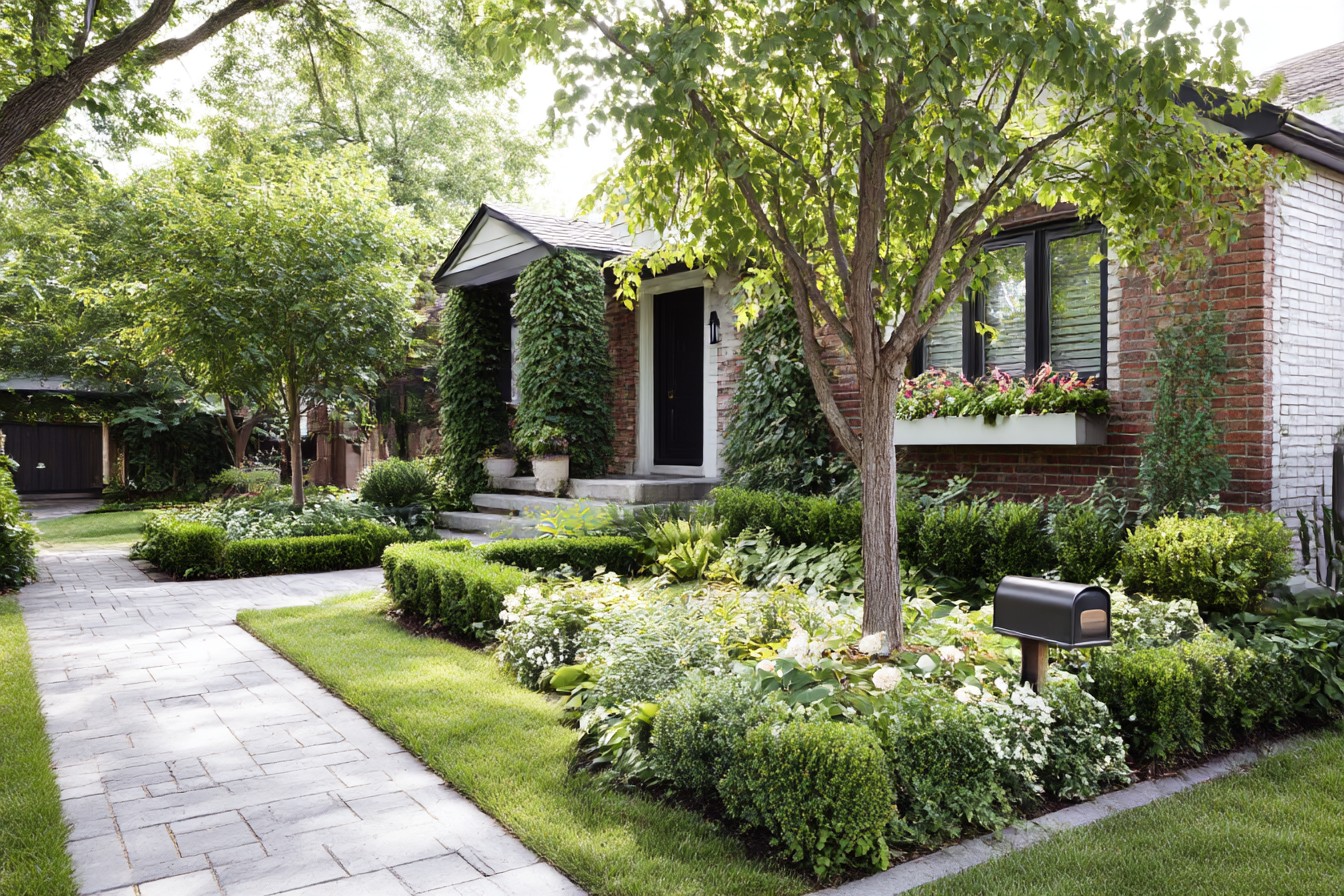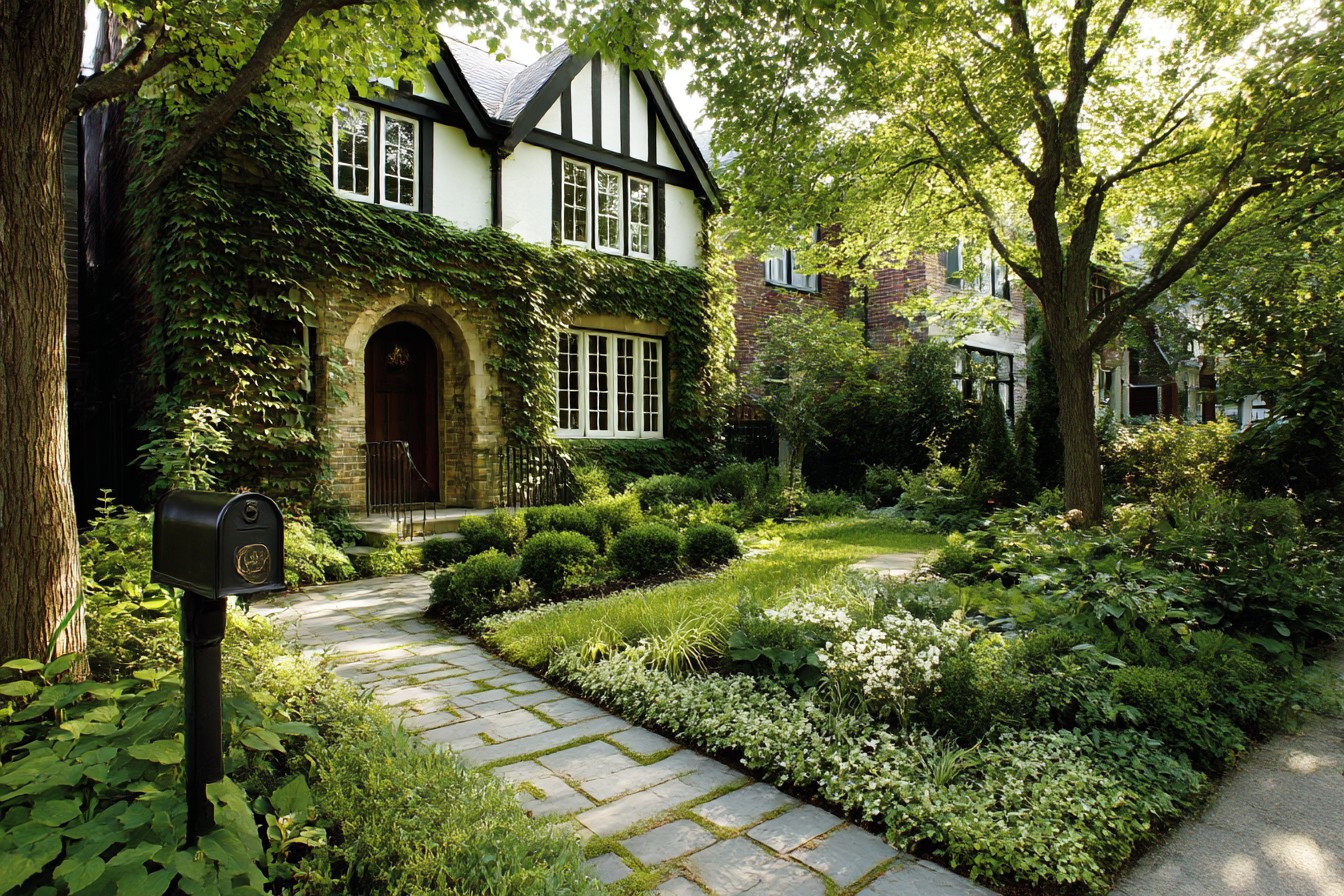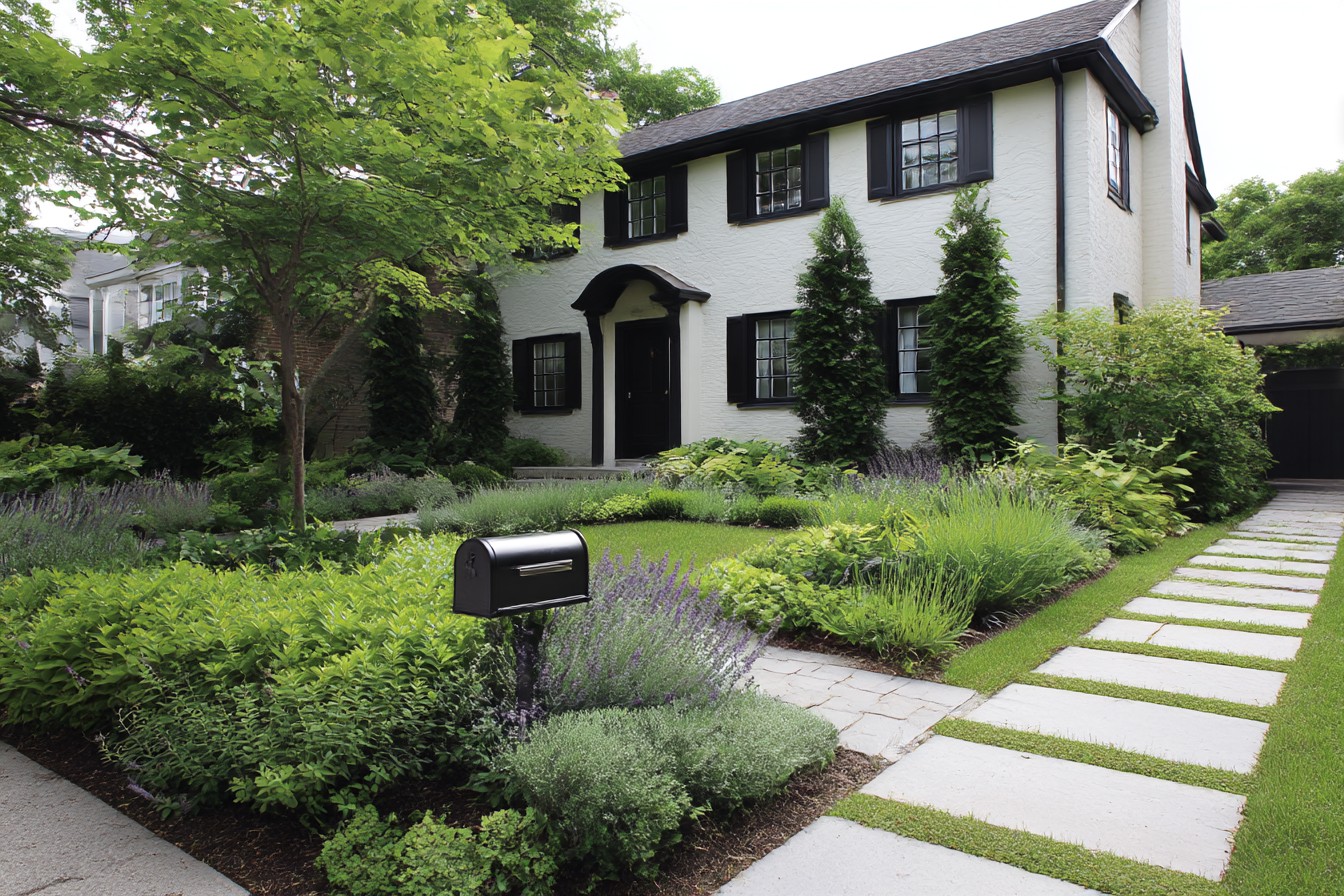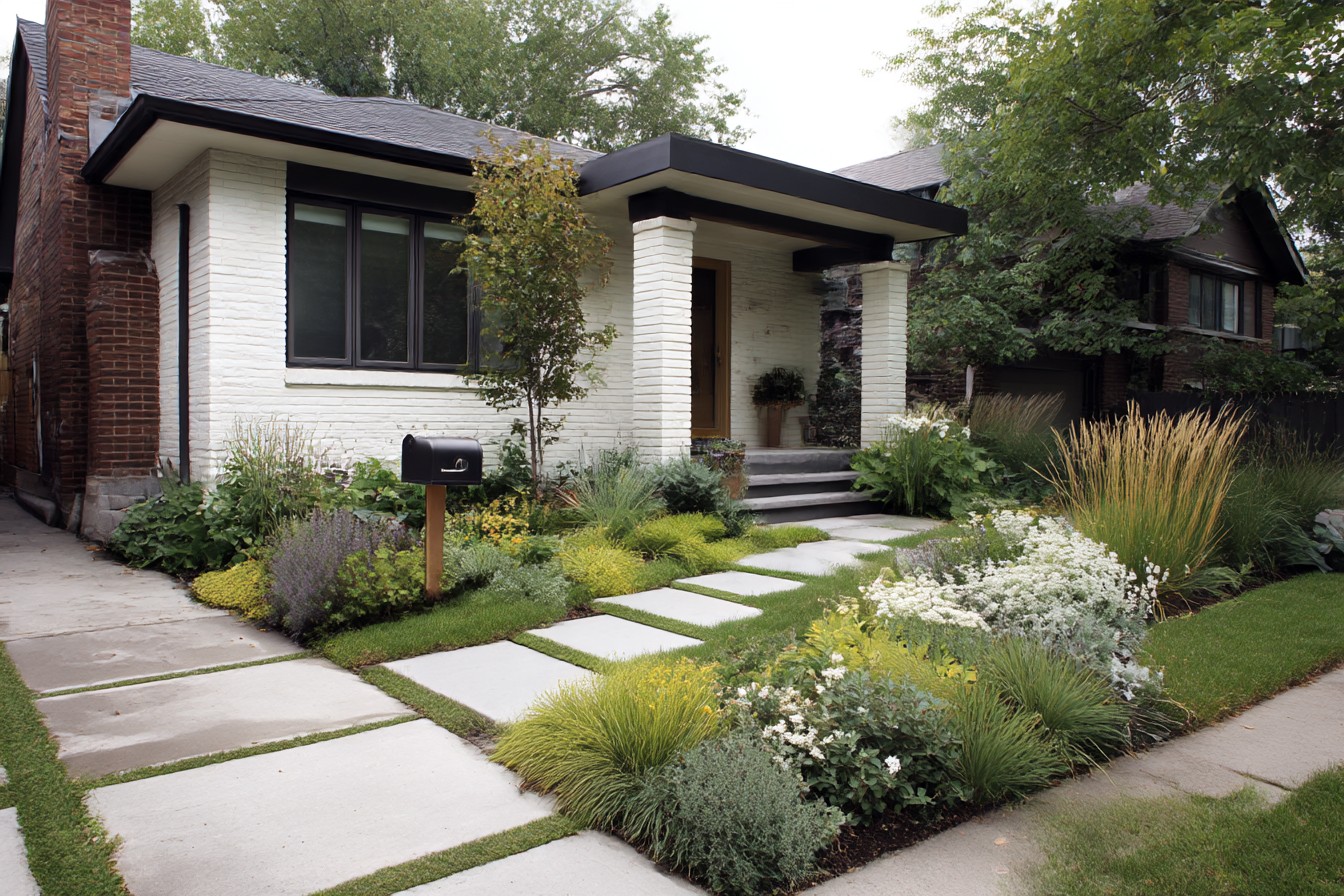Last spring, my neighbor Tom put his 1970s split-level on the market. Nice house, good bones, but man—that front yard looked like it had given up sometime during the Obama administration. Brown patches in the lawn, overgrown yews hiding half the windows, and a concrete path with more cracks than a dropped mirror. His realtor kept dropping hints about “curb appeal issues,” which is agent-speak for “your house looks sad from the street.” Tom called me in a panic on a Wednesday, worried about the weekend’s open house. “Mike, what can I actually do in two days that’ll make a difference?”
See, this is where I get excited. Sure, I love a good six-month renovation as much as the next contractor, but there’s something deeply satisfying about those quick-hit projects that deliver immediate results without demolition or permits. By Sunday afternoon, Tom’s place looked like it had gotten a face-lift. Three offers rolled in Monday morning—two above asking. The best part? We spent less than $500 and maybe 14 hours of sweat equity.
That’s the secret most professional stagers and landscapers don’t advertise: some of the highest-impact exterior improvements take more elbow grease than actual cash. You don’t need to tear out sidewalks or install elaborate water features to boost your home’s appearance. You just need to look at your front yard with fresh eyes and tackle the visual elements that make the strongest first impression.

I’ll never forget my grandfather pointing to a shabby bungalow as we drove through his neighborhood. “That house has good bones,” he’d say, “but terrible haircut and clothes.” Pop’s analogy still holds up. Your home’s structure is its bones, but the landscaping, paint accents, and decorative elements are its outfit—much easier to update than major surgery.
When Andrea and I bought our Tudor, the previous owners had let the front yard go while focusing on a backyard renovation. Classic mistake. You experience your backyard yourself, but everyone—from delivery drivers to potential buyers—experiences your front yard. We knocked out a curb appeal makeover in a single weekend, and the difference was dramatic enough that a passing dog-walker actually stopped to ask if we’d bought the place or were just the new landscapers. Gotta love that Midwestern directness.
So what can you actually accomplish in a weekend? Plenty, if you prioritize high-visual-impact tasks over perfectionism. Here’s my game plan for 48-hour curb appeal transformation:
First stop: your mailbox and house numbers. I know this sounds trivial, but hear me out. These are the first things people interact with when finding your home. That dented mailbox with faded numbers? The crooked “5” that’s been hanging on by one screw since 2017? They’re making an impression before anyone even reaches your door. For Tom, we replaced his rusty old mailbox ($35 at Home Depot) and installed modern floating house numbers ($8 each at a local hardware store). The whole project took maybe 45 minutes but gave the entrance an immediate upgrade.
For our Tudor, I went with oil-rubbed bronze numbers to match the pseudo-historic vibe, while my sister’s mid-century ranch got sleek brushed aluminum. Match the style to your home’s architecture, install them straight (please, for the love of all things holy, use a level), and make sure they’re visible from the street. If they’re hard to see, add a contrasting backplate or relocate them to somewhere with better visibility.

Next up: lighting. Nothing makes a house look more neglected than broken or outdated exterior lights. We replaced Tom’s 1980s brass coach lights with simple black fixtures that better matched his home’s clean lines ($42 each, and we needed two). If you’re even slightly handy, swapping exterior fixtures is a straightforward DIY—just remember to turn off the power at the breaker box first. I’ve seen too many YouTube tutorials skip that critical safety step.
If your fixtures are in good shape but just dirty, take them apart and give them a thorough cleaning. You’d be amazed how much brighter they’ll look without 10 years of bug carcasses inside. And while you’re at it, swap out those old incandescent bulbs for LEDs in a “warm white” color temperature (2700-3000K). The cool blue lights might be more energy-efficient, but they make your home look like a prison yard at night.
Now for the hardest part of the weekend: the greenery intervention. This is where you need to be brutally honest about what’s helping and hurting your home’s appearance. Those overgrown bushes that seemed fine until you really looked at them? They’re probably casting dark shadows on your windows and making the whole place feel gloomy.
At Tom’s, we removed two massive yews that were completely obscuring the front windows—a major project that involved a reciprocating saw, some colorful language, and a rented stump grinder. Worth every bead of sweat though, because suddenly his living room had natural light and the house appeared 30% larger from the street. Sometimes addition by subtraction makes the biggest difference.
If you’ve got foundation plantings that are reasonably sized but just scraggly, a good pruning can work wonders. The goal isn’t to give them a flat-top military haircut but to shape them into clean forms that complement your architecture. For evergreens, I’m a fan of the “less is more” approach—remove obviously dead sections and balance the overall shape, but resist the urge to turn your shrubs into geometric sculptures unless you’re going for that very specific formal look.

Once you’ve addressed existing plants, adding new ones strategically gives you the most bang for your buck. Rather than scattering a few flowers everywhere, concentrate on focal points like the entry area or beneath windows. For Tom’s yard, we installed two decorative urns flanking the front door ($35 each at a local garden center) filled with geraniums and trailing vines ($25 total). The symmetry drew the eye right to the entry, making the approach feel intentional rather than afterthought.
If you’re working with a tiny budget, mulch is your secret weapon. I’m not even kidding—fresh mulch in your beds is like adding a filter to your yard’s selfie. It instantly gives everything a cleaner, more maintained look while helping with weed control. A yard of good hardwood mulch runs about $35-45 delivered, and most homes need 2-3 yards to cover the front beds with a 2-3 inch layer. Hardwood breaks down better than those rubber or dyed mulches, so your plants will thank you too.
Edging is another game-changer that costs more in effort than dollars. A clean, defined line between your lawn and flower beds gives everything a more manicured appearance. You can use a half-moon edger tool ($25-30) to cut a neat trench by hand, or rent a power edger for bigger jobs. Either way, that crisp delineation tells people that someone is actively caring for this landscape.
For paths and driveways, a good power-washing can subtract years of grime in hours. We rented a pressure washer ($45 for the day) and blasted Tom’s concrete walkway and driveway. The transformation was so dramatic that his kid thought we’d repoured the concrete. Just be careful not to go overboard with the pressure—you can actually damage some surfaces by hitting them too hard. Test in an inconspicuous area first, and when in doubt, dial back the pressure and make multiple passes.
If your concrete is beyond saving with a wash, consider this hack: concrete stain. For about $35 a gallon, you can apply a semi-transparent color that hides a multitude of sins while giving the surface a more upscale look. It’s not as durable as replacing the concrete, but it can buy you years of improved appearance until you’re ready for that bigger project.

Let’s talk about the lawn. Unless you’re dealing with major issues like grub damage or soil problems, a complete reseed is probably overkill for a weekend project. Instead, focus on simple improvements: mow it at the correct height for your grass type (usually 2.5-3.5 inches), clean up the edges with a string trimmer, and apply a quick-release fertilizer if the color needs a boost. For small bare patches, pick up a bag of patch repair mix that combines seed, fertilizer, and mulch ($15-20). It won’t create an instant carpet of green, but it signals to viewers that the lawn is being actively maintained.
The finishing touches often make the biggest impression. For Tom, we added a new welcome mat ($22), a wreath on the door ($35 from Andrea’s craft stash), and painted his front door. That last project deserves special mention—painting a front door is a 3-hour project at most, costs about $25 in supplies, and completely changes the character of your entrance. Tom’s door went from a forgettable tan to a rich navy blue that popped against his home’s gray siding and became an immediate focal point.
If you’re not ready to commit to a full door paint job, even cleaning and polishing your existing door hardware makes a difference. People interact with your door handle; make it shine. Same goes for kickplates, mail slots, and door knockers—a little metal polish goes a long way.
The most overlooked quick win? Cut back anything touching your house. Branches rubbing against siding, vines creeping up walls, shrubs blocking vents—these all read as “neglect” to visitors and can actually damage your home over time. Maintaining that breathing room around your structure not only looks better but prevents moisture issues and gives insects fewer highways into your house.
By Sunday evening, Tom’s yard had gone from “why bother?” to “wow factor” without breaking the bank. The best part about these weekend warrior projects is that they compound—tackle one area this weekend, another the next, and suddenly your home’s exterior has transformed completely. Just be warned: once your yard looks dramatically better, your neighbors might start finding excuses to drop by for your advice. Which is how I ended up re-mulching Mrs. Peterson’s rose garden the following weekend.
Your house deserves better than the “I’ll get to it someday” treatment. You don’t need to wait until you’re selling to enjoy the benefits of good curb appeal. There’s something deeply satisfying about pulling into your driveway at the end of a long day and genuinely liking what you see. And that kind of satisfaction is absolutely achievable in a single weekend—plus maybe a few ibuprofen for the Monday morning muscle aches.